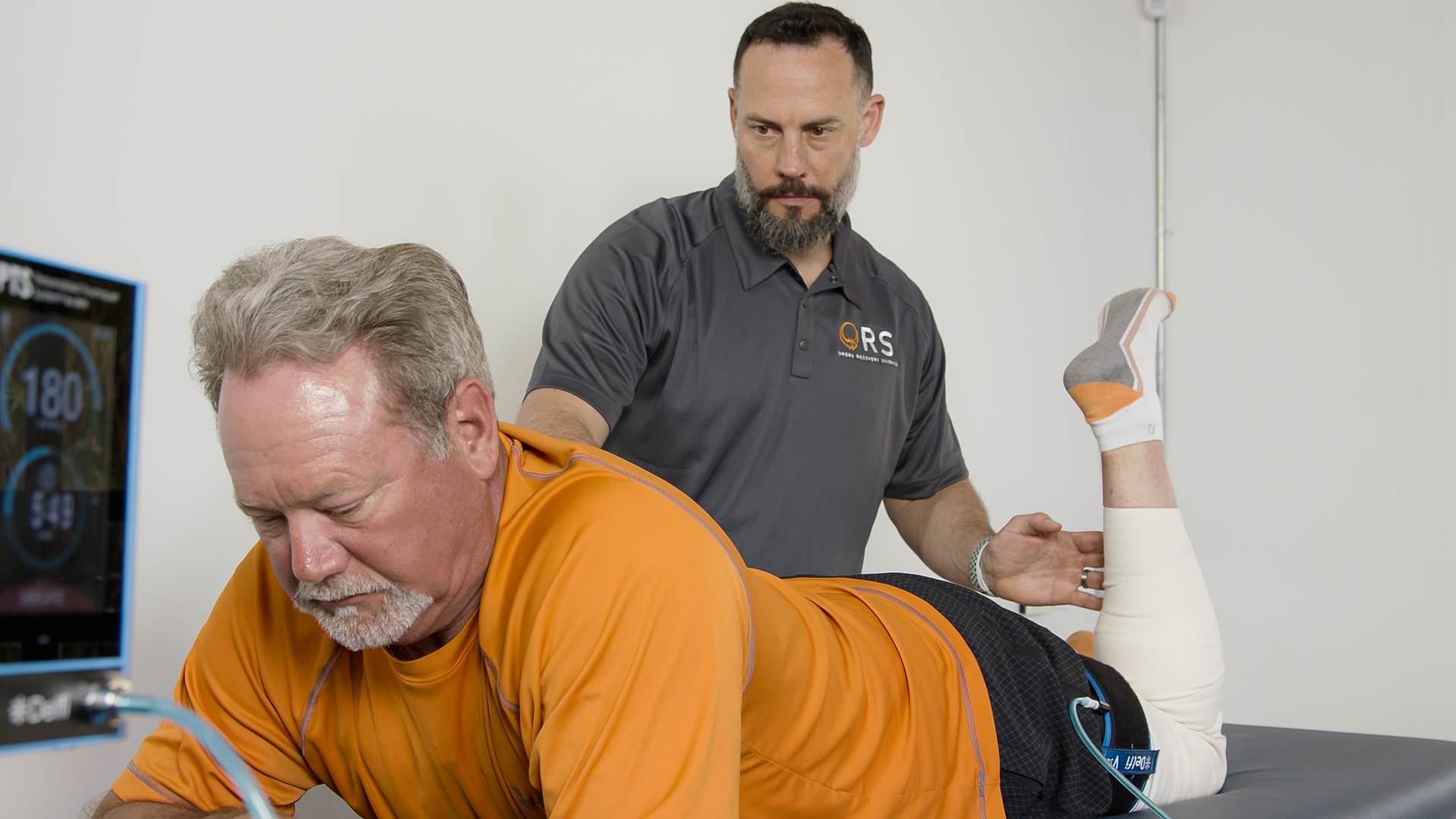The pursuit of improved safety and objectivity is a recurring theme in BFR research and a primary target for BFR clinical practice. The use of minimal effective pressure is considered to be the safest for tourniquet applications. An article that was published this month in the International Journal of Exercise Science took aim at that concept. Weatherholt et al compared Limb Occlusion Pressure (LOP) between the Delfi and Kaatsu tourniquet systems.
Full occlusion or LOP isn't the target for BFR training with exercise, but it provides a means to individualize the pressure used on a limb. The authors measured LOP using ultrasound with a Doppler probe on the popliteal artery while participants were in the standing position. Not only was the pressure with the wider (Delfi) cuff lower, but the narrow (Kaatsu) cuff wasn't able to reduce arterial blood flow even at its max pressure. "We observed arterial occlusion in all subjects with the wide cuff. However, we were unable to alter arterial blood flow velocity with the narrow cuff. Each subject reached the Kaatsu's maximum pressure with the narrow cuff which is 500 KTU."
These results mirror those of other studies that demonstrate narrow cuffs need more pressure to create the same effect as wider cuffs at lower pressure. Another potential problem for the narrow cuff used in the study is a non-standardized unit of pressure. "Kaatsu uses standard Kaatsu units (SKU) to measure pressure applied to the cuff; therefore, a pressure gauge was used to establish a conversion from SKU to mmHg. It was found that 1 SKU is equal to 1 mmHg." The max pressure for the Kaatsu system is equivalent to 500 mmHg and it didn't significantly alter arterial blood flow. This would indicate that LOP for the participants in this study is > 500mmHg and high pressure across a narrow surface increases the risk for nerve-related injury (Noordin 2009).
In order to practice in a safe and objective fashion, we need to be able to individualize the pressure we use with BFR (Hughes 2018, McEwen 2018).
- Noordin, Shahryar, et al. “Surgical Tourniquets in Orthopaedics.” The Journal of Bone and Joint Surgery. American Volume, vol. 91, no. 12, Dec. 2009, pp. 2958–67.
- Hughes, Luke, Benjamin Rosenblatt, et al. “Interface Pressure, Perceptual and Mean Arterial Pressure Responses to Different Blood Flow Restriction Systems.” Scandinavian Journal of Medicine & Science in Sports, Apr. 2018, doi:10.1111/sms.13092.
- McEwen, James A., et al. “Why Is It Crucial to Use Personalized Occlusion Pressures in Blood Flow Restriction (BFR) Rehabilitation?” Journal of Medical and Biological Engineering, Apr. 2018, doi:10.1007/s40846-018-0397-7.
- Weatherholt, Alyssa, et al. “The Effect of Cuff Width for Determining Limb Occlusion Pressure: A Comparison of Blood Flow Restriction Devices.” International Journal of Exercise Science, vol. 12, no. 3, 2019, pp. 136–43. (Open Access at Journal Site)


